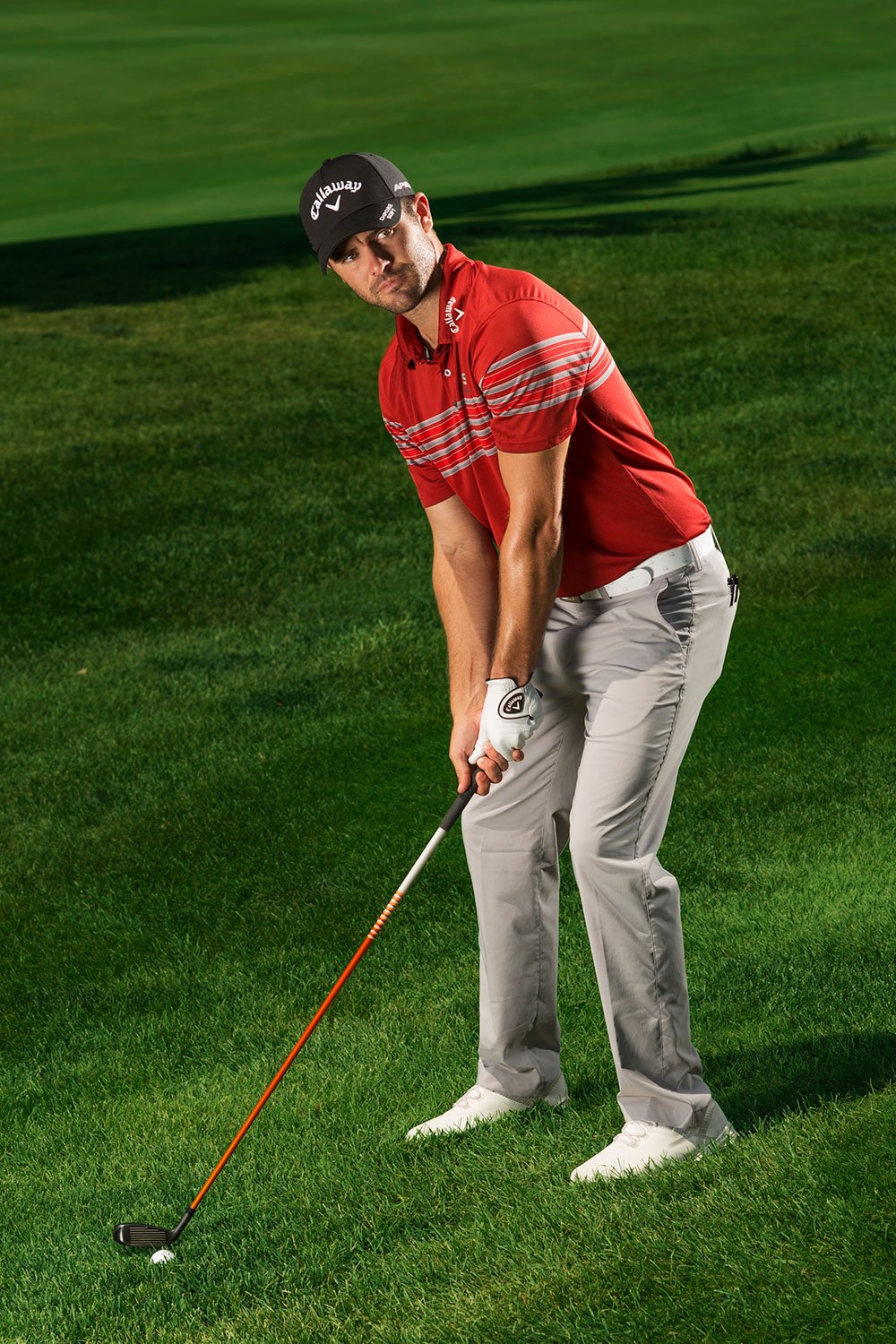I’m guessing you’ve hit a miracle shot once or twice. Maybe you threaded it through the trees, or nipped a wedge off a cartpath. Before I joined the US PGA Tour, I had a lot of fun making trick-shot videos with my brother, George. I’d hit golf balls in midair with a driver, skip them across ponds to a target on the other side, bank them off trampolines – you get the idea. Miracle shots are really hard to pull off, but when you’re playing for a score, you need to improve your odds. I’ll show you three stroke-saving trick shots that will look miraculous to your playing partners and opponents, but if you follow my advice, you’ll feel comfortable hitting anytime.

‘A tight-lie flop requires commitment, swing speed – and stones.’ – Wesley Bryan
The Tight Flop
When there’s no choice but to hit one high from a very tight lie, even a tour player like me sweats a little. This shot can lead to thoughts of blading it over the green and into the subdivision behind it. But by keeping in mind a couple of simple factors, you can dramatically increase your chance of success.
When you blade a pitch, most of the time it’s because you changed the distance between your body and the ball during the downswing. To prevent that from happening, keep your lower body very quiet and use an upright, arm-dominated swing. Open the face slightly at address, and then let the clubhead release through impact with some speed [left]. You want to feel the sole of the club, not the leading edge, sliding along the turf.
The Emergency Hybrid
 Hybrids are awesome for making longer shots easier to hit than if you used a 3-iron or 4-iron. But you can run into problems using a hybrid when the ball is sitting down in the rough. Unlike irons, the bigger head and wider sole can get caught up in the grass, and the ball goes nowhere.
Hybrids are awesome for making longer shots easier to hit than if you used a 3-iron or 4-iron. But you can run into problems using a hybrid when the ball is sitting down in the rough. Unlike irons, the bigger head and wider sole can get caught up in the grass, and the ball goes nowhere.
The way I use a hybrid from deep grass is to set up and play for a fade. To copy me, open your stance and the hybrid’s clubface [right]. Also, adjust your aim for the fade and play the ball slightly back of centre in your stance to encourage a steeper downswing. You’re trying to make contact with as little grass as possible before your club strikes the ball.
Keep in mind that it’s natural to think you’ll need more help than these adjustments to get the ball to the green. But resist the urge to overswing or try to help the ball in the air with a wristy, back-foot swipe.
Depending on the depth of the rough, you can hit it close to normal fairway distance. You’ll launch a flier that rolls and rolls.

The Rescue Pitch
You have a pitch shot that doesn’t need to travel very far, but the ball is way down in the grass. This shot can really lock up a weekend player. How do you swing with enough speed to get the ball out of the rough, but send it only 20 to 30 yards?v
Here’s how: set up like you would for a normal pitch shot, but open the face of your wedge as if you were about to play a bunker shot from the same distance. And just like a sand shot, you’re going to want to blast the club through the grass, keeping the clubface pointing skyward throughout. Feel like your hands are swinging around your body and moving towards your left pocket through impact [left].
The speed created by making a bunker-type swing will help the club easily cut through the high grass, and you’ll hit a shot where the ball pops up and comes down soft without much spin. When it lands and stops by the flag, your friends will say you couldn’t do that again if you hit a bucket of balls. You’ll just smirk and say, “Yup, it’s a miracle.”
– Wesley Bryan, winner of the 2017 RBC Heritage at Harbour Town



